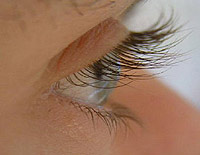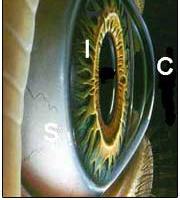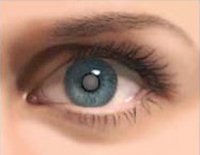What is blepharitis? What are the causes of blufarita? How to diagnose blepharitis? How is the treatment of blufaritis? Answers to these questions you will find in the article.
Content
Blepharitis, reasons for blepharitis
Blepharitis is a disease of the eyes of the eyelids. Reasons for blepharitis are numerous and diverse. There are general and local causes, sometimes their combinations.
General reasons:
- Chronic infectious and infectious-allergic diseases
- Hyovitaminosis
- anemia
- Glice Invasii
- Diseases of the gastrointestinal tract (gastritis, colitis, ulcerative disease, dysbacteriosis, etc.)
- Dish diseases
- Nasopalotka
Local reasons:
- Unregulated or incorrectly corrected refraction anomalies (at myopia, hyperopia)
- Accommodation disorders
- Chronic conjunctivitis
- Diseases of tear paths
- Work in adverse environments: wind exposure, dust, smoke
What are the symptoms of blufarita

Distinguish simple (or scaly), ulcerative, mabomi, demodic blufarites. For all forms of blufaritis, a long, chronic course, accompanied by itching, the feeling of the severity of the eyelids, the rapid fatigue, increased their sensitivity to bright light. In severe cases, blufarite can lead to the appearance of a halazion (a dense rounded formation in the thickness of the cartilage of the century), Keratitis (cornea inflammation).
With a simple blufarite: The edges of the age are slightly hyperemic, sometimes thickened, covered with small grayish-white scales (dandruff) or yellowish crusts.
Ulcerative bluffy It is characterized by formation on the edge of the age of purulent crusts, after the removal of which bleeding ulcers are naked, it is possible to fit the hair bags and sebaceous glands. As a result of the scarring, resistant eyelashes are occurring, their incorrect growth (trichiasis), inverting the tear point or all century.
Meibomy blepharitis It is characterized by the fact that the hyperemic and thickened edge of the century seems to be washed, when pressed on the cartilage of the eyelid, a muddy oily secret is distinguished from the mabomy gland gland, which covers the cornea in the form of a film. Meibomit is acute and chronic.
Acute meibomit The clinic is similar to a barley, but the pathological process is not found at the edge of the century, but in the depths of cartilage, which can be seen when the century is turned.
Barley-acute purulent inflammation of the Shan (Iron Zeysa) Mains a century located near the root of the eyelashes due to infection (more often by Staphilakokok)
How to diagnose blepharitis
The diagnosis is made on the basis of a clinical picture as a result of a conventional examination of eyelashes and a century with an ophthalmic microscope (T.N. slit lamp). In some cases, a laboratory study of the cellular and microbial composition of the scope of the conjunctions and the determination of microscopic ticks demodex in the roots of eyelashes.
When identifying signs of blufaritis, the patient needs to be examined by other specialists: the consultations of the dentist, the oloringologist, the gastroenterologist, allergenologist, and others are shown.
How is the treatment of blufaritis
Locally spend a toilet of the clarity edge of the eyelids: remove flakes, crusts, edges are treated with antiseptic solutions with applications of ointments with antibiotics or sulfonamides, antibacterial and hormonal preparations. With meibomy blufarite, the eyelid massage is carried out with a glass wand, squeezing the contents of the maibomy gland, after which the edge of the eyelid processing with alcohol solutions.
Specific preparations are added for demodic blufaritis: Demalan, Blefarogel 2, Zinc-ichthyol ointment. With all types of blepharitis, laser therapy is possible.
Treatment of chronically leaking blufarites Comprehensive: Lowering activities, Sanation of foci of infection (teeth, almonds and others), full nutrition, treatment of intestinal dysbiosis, compliance with hygienic working conditions and life, correct correction of anomalies of view.
Often, the treatment of blufaritis lasts long and requires patient patient.
Systematic treatment usually leads only to a periodic improvement of the process, as it is not always possible to install and eliminate the cause.









